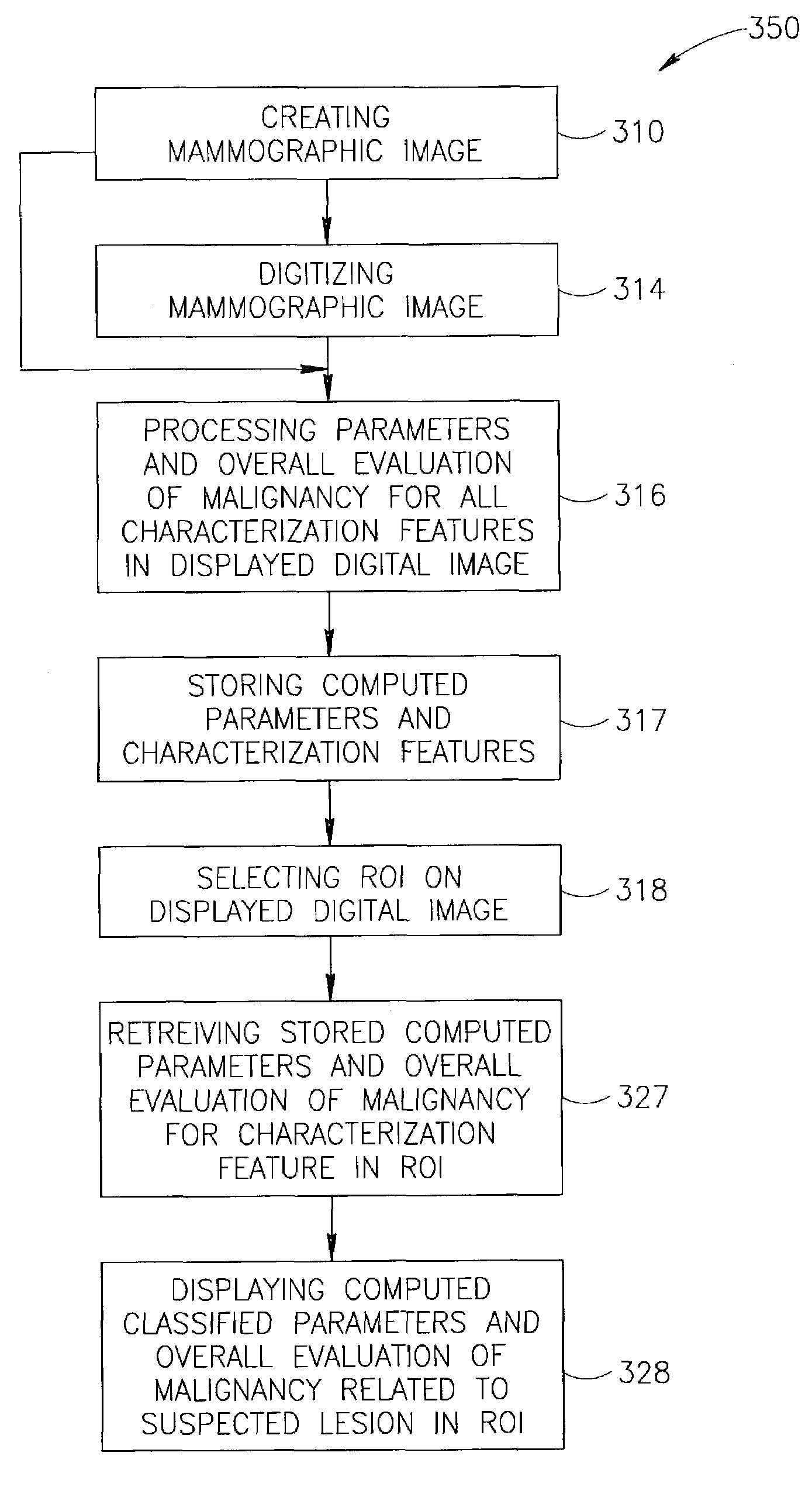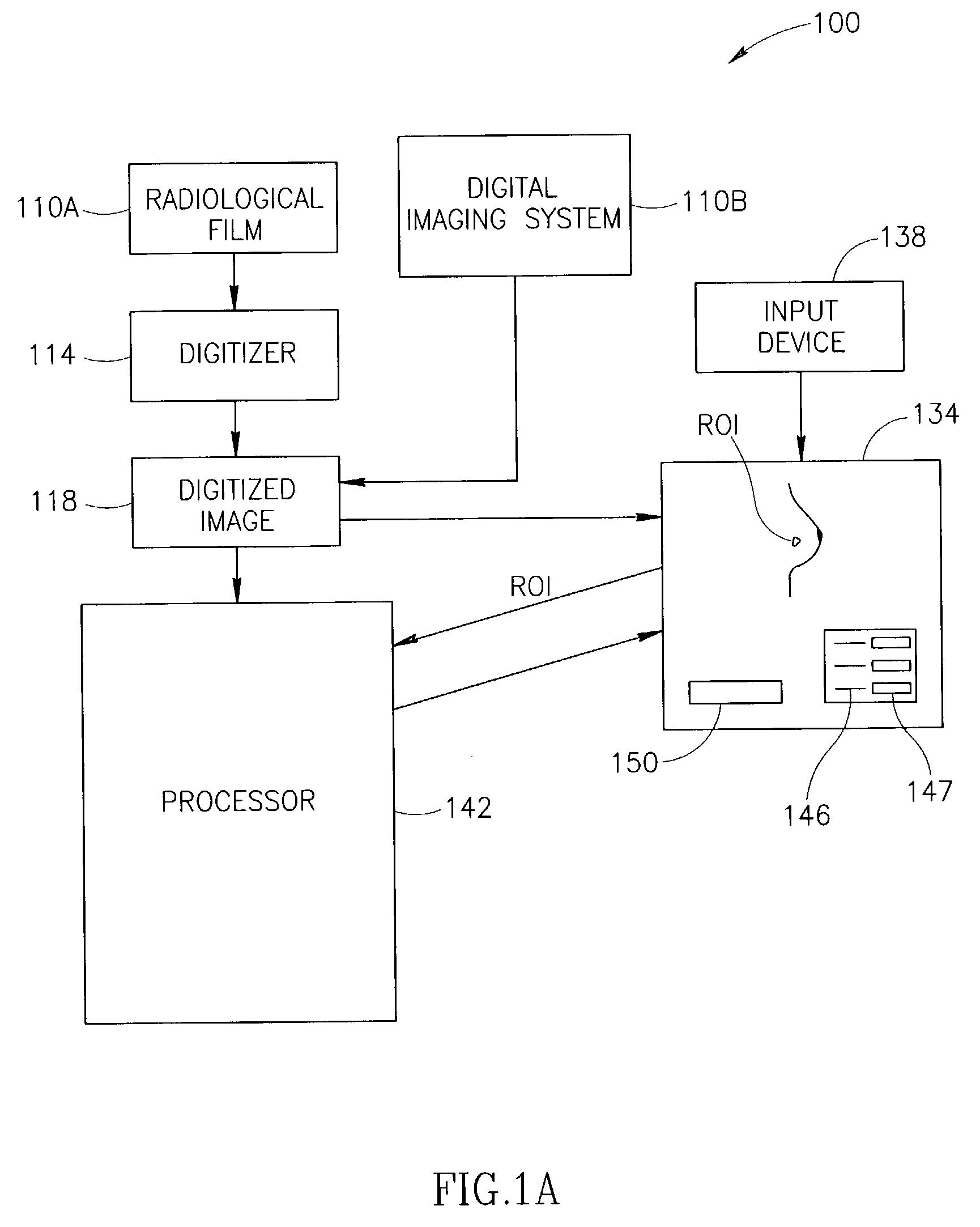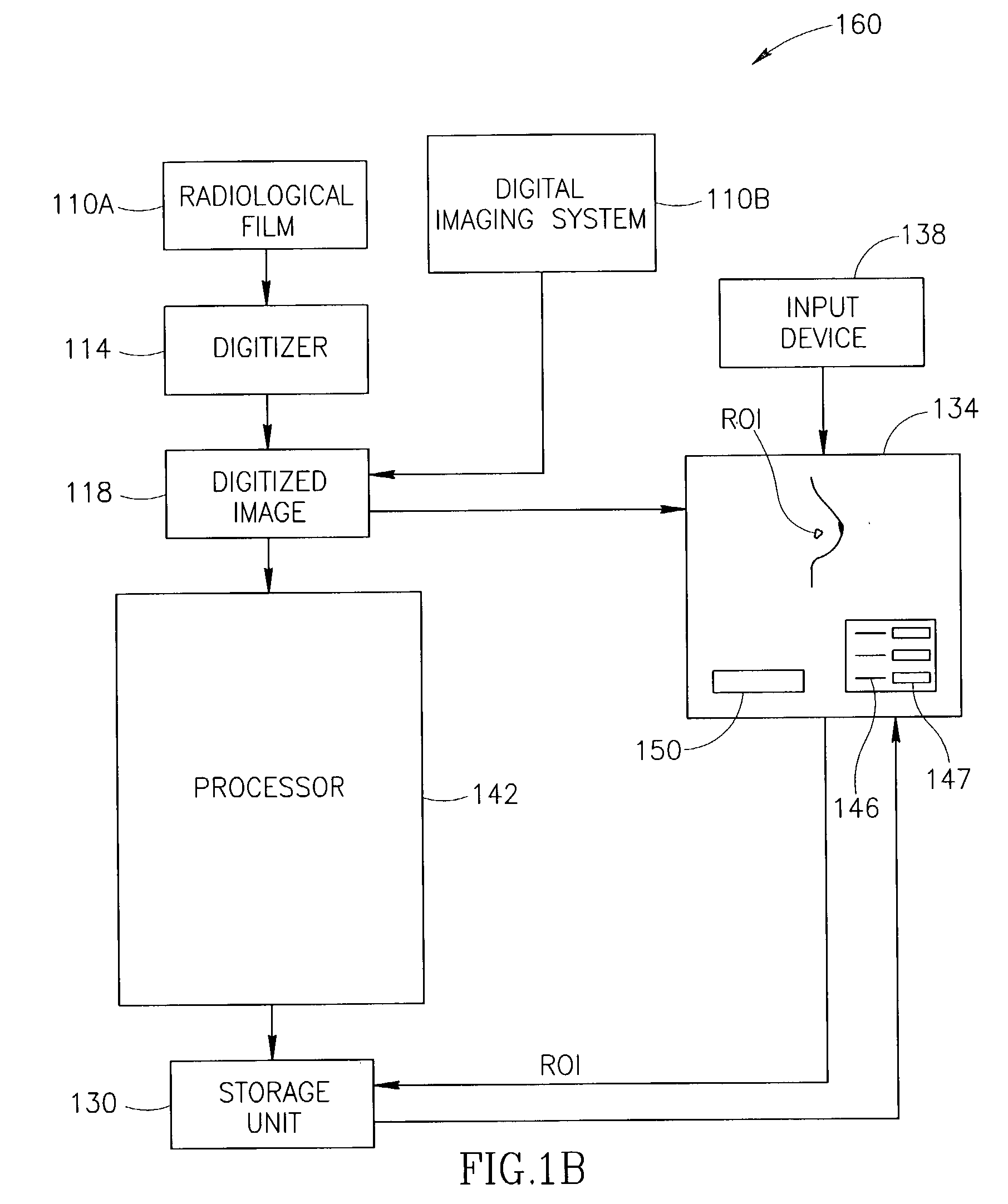Display for computer-aided diagnosis of mammograms
a mammogram and computer-aided technology, applied in the field of mammogram computer-aided diagnosis, can solve the problems of difficult to see or evaluate lesions, require advanced diagnostic tools, and difficult to interpret mammograms
- Summary
- Abstract
- Description
- Claims
- Application Information
AI Technical Summary
Benefits of technology
Problems solved by technology
Method used
Image
Examples
Embodiment Construction
[0048]The present invention relates to a method and system for displaying digitized mammogram images and diagnosis-assisting information that aids in interpreting the images. More specifically, the invention relates to a computer-aided diagnosis (herein after sometimes denoted as “CAD”) method and system for classifying and displaying malignancy evaluation / classification data for anatomical abnormalities in digitized mammogram images. Characterization features of suspected abnormalities in user-selected regions of interest (ROI) are viewed on a display in conjunction with an overall evaluation of malignancy and usually also with a plurality of quantified parameters related to the characterization features. The overall evaluation of malignancy and / or the plurality of quantified parameters are herein also called classifier data. The characterization features viewed and evaluated / classified are also user-selected.
[0049]The overall evaluation of a suspected lesion in the radiological im...
PUM
| Property | Measurement | Unit |
|---|---|---|
| Time | aaaaa | aaaaa |
| Density | aaaaa | aaaaa |
Abstract
Description
Claims
Application Information
 Login to View More
Login to View More - R&D
- Intellectual Property
- Life Sciences
- Materials
- Tech Scout
- Unparalleled Data Quality
- Higher Quality Content
- 60% Fewer Hallucinations
Browse by: Latest US Patents, China's latest patents, Technical Efficacy Thesaurus, Application Domain, Technology Topic, Popular Technical Reports.
© 2025 PatSnap. All rights reserved.Legal|Privacy policy|Modern Slavery Act Transparency Statement|Sitemap|About US| Contact US: help@patsnap.com



